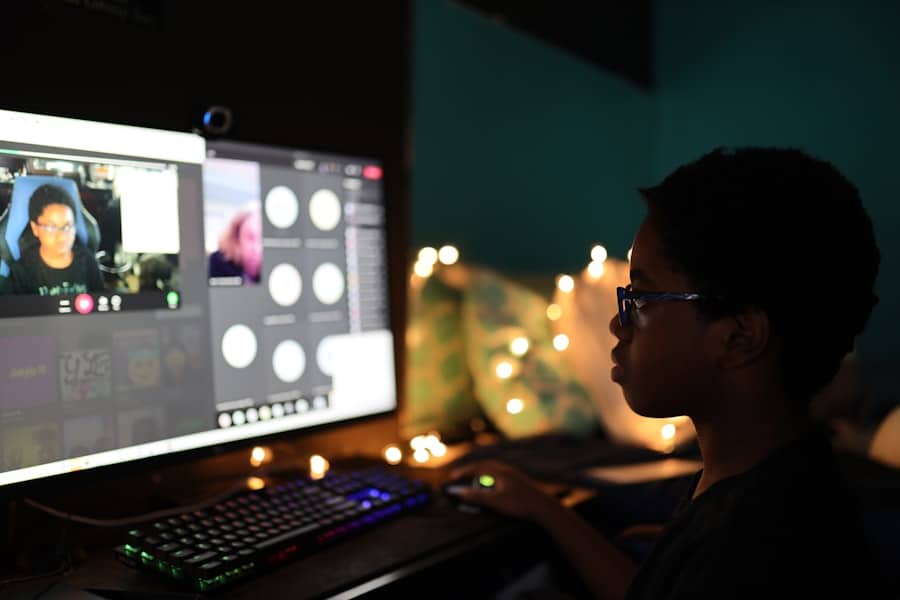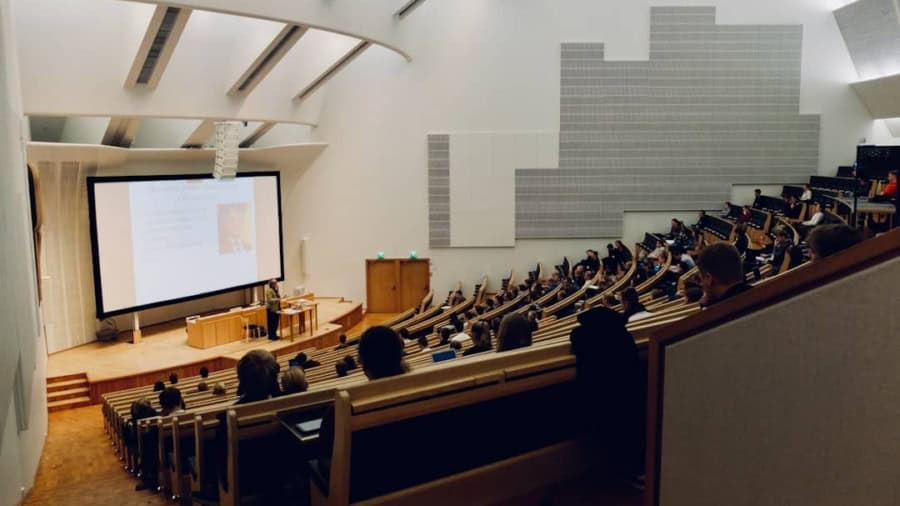Learning loss in crisis zones has emerged as a pressing global issue, particularly in regions afflicted by conflict, natural disasters, or socio-economic instability. These environments disrupt traditional educational systems, leading to significant gaps in knowledge and skills among children. The United Nations Educational, Scientific and Cultural Organization (UNESCO) estimates that millions of children worldwide are out of school due to crises, with many more experiencing interrupted learning.
This phenomenon not only affects immediate educational outcomes but also has long-term implications for individual development and societal progress. The challenges faced by children in crisis zones are multifaceted. Displacement, trauma, and a lack of resources contribute to an environment where learning becomes secondary to survival.
Schools may be destroyed or repurposed for other uses, and teachers may be absent or untrained to handle the unique needs of their students. As a result, children in these areas often fall behind their peers in more stable regions, exacerbating existing inequalities and hindering future opportunities. Addressing learning loss in these contexts is not merely an educational challenge; it is a humanitarian imperative that requires innovative solutions.
Key Takeaways
- Learning loss in crisis zones is a significant issue that affects the education and future prospects of children in these areas.
- The impact of learning loss on children in crisis zones includes decreased educational attainment, limited future opportunities, and increased vulnerability to exploitation and violence.
- Virtual reality has the potential to address learning loss by providing immersive and interactive educational experiences for children in crisis zones.
- Virtual reality can be a tool for increasing access to education in crisis zones by overcoming physical barriers and providing high-quality educational content.
- Case studies of virtual reality programs in crisis zones have shown promising results in improving learning outcomes and engagement among children in these areas.
The Impact of Learning Loss on Children in Crisis Zones
The impact of learning loss on children in crisis zones is profound and far-reaching. Cognitive development is significantly hindered when children are unable to access consistent education. Research indicates that prolonged periods without formal schooling can lead to diminished academic performance, reduced critical thinking skills, and lower self-esteem.
For instance, a child who misses several years of schooling due to conflict may struggle to catch up with peers even after returning to a stable environment, leading to a cycle of disadvantage that can persist into adulthood. Moreover, the emotional and psychological toll of learning loss cannot be overlooked. Children in crisis zones often experience trauma from violence, displacement, and loss of family members.
This trauma can manifest as anxiety, depression, and behavioral issues, further complicating their ability to engage with educational content. The lack of a structured learning environment exacerbates feelings of instability and uncertainty, making it difficult for these children to envision a hopeful future. The intersection of educational disruption and psychological distress creates a critical need for targeted interventions that address both academic and emotional needs.
The Potential of Virtual Reality in Addressing Learning Loss

Virtual reality (VR) has emerged as a promising tool for addressing learning loss in crisis zones by providing immersive and engaging educational experiences.
For example, a child in a conflict zone can virtually visit historical sites or engage in scientific experiments that would otherwise be inaccessible due to their circumstances.
This technology not only enhances engagement but also fosters a sense of agency and curiosity among learners. Furthermore, VR can be tailored to meet the specific needs of children affected by crises. Customizable content can address various educational levels and subjects, ensuring that learners receive appropriate instruction regardless of their prior knowledge or experience.
Additionally, VR can facilitate social interaction among students who may be isolated due to their circumstances. By creating virtual classrooms where children can collaborate on projects or participate in discussions, VR helps rebuild the social fabric that is often disrupted in crisis situations.
Virtual Reality as a Tool for Access to Education in Crisis Zones
The use of virtual reality as a tool for access to education in crisis zones presents unique opportunities for overcoming barriers that typically hinder learning. In many cases, physical infrastructure is lacking; schools may be damaged or non-existent, and transportation can be dangerous or impractical. VR circumvents these challenges by providing a portable solution that can be deployed in various settings, including temporary shelters or community centers.
This flexibility allows educators to reach students who might otherwise be excluded from the learning process. Moreover, VR can bridge the gap between different educational systems and curricula. In regions where formal education is disrupted, VR can offer standardized content that aligns with international educational standards.
This ensures that children receive quality instruction that prepares them for future academic pursuits or vocational training. By leveraging technology to create equitable access to education, VR has the potential to level the playing field for children in crisis zones, enabling them to compete on a global scale.
Case Studies of Virtual Reality Programs in Crisis Zones
Several case studies illustrate the successful implementation of virtual reality programs aimed at addressing learning loss in crisis zones. One notable example is the “VR for Refugees” initiative launched by a non-profit organization that provides immersive educational experiences for displaced children in refugee camps. Through VR headsets, students can engage with interactive lessons on mathematics, science, and language arts while also exploring cultural heritage sites from their home countries.
Feedback from participants has shown increased motivation and improved academic performance as a result of this innovative approach. Another compelling case is the use of VR technology in Syrian refugee camps in Jordan. Organizations have developed VR applications that simulate classroom environments, allowing children to participate in lessons remotely while also providing emotional support through guided mindfulness exercises.
These programs have not only helped mitigate learning loss but have also fostered resilience among students by creating a sense of normalcy amidst chaos. The success of these initiatives highlights the potential for scaling VR solutions across various crisis-affected regions.
Challenges and Limitations of Implementing Virtual Reality in Crisis Zones

Despite its potential benefits, implementing virtual reality in crisis zones is fraught with challenges and limitations. One significant barrier is the lack of technological infrastructure in many affected areas. Reliable electricity and internet connectivity are often scarce, making it difficult to deploy VR solutions effectively.
Additionally, the cost of VR equipment can be prohibitive for organizations operating on limited budgets, further complicating efforts to provide access to this technology. Moreover, there are concerns regarding the appropriateness of content delivered through VR platforms. While immersive experiences can enhance engagement, they must also be culturally sensitive and relevant to the specific needs of learners in crisis zones.
Without careful consideration of local contexts and educational standards, there is a risk that VR programs may inadvertently perpetuate stereotypes or fail to resonate with students’ lived experiences. Ensuring that content is developed collaboratively with local educators and communities is essential for maximizing the impact of VR initiatives.
The Role of Virtual Reality in Supporting Teachers and Educators in Crisis Zones
Virtual reality can play a crucial role in supporting teachers and educators working in crisis zones by providing them with innovative tools and resources for instruction. Many educators face significant challenges due to limited training and resources; VR can serve as a supplementary teaching aid that enhances their ability to deliver engaging lessons. For instance, teachers can use VR simulations to demonstrate complex concepts or facilitate group discussions around challenging topics such as conflict resolution or cultural understanding.
Additionally, VR can offer professional development opportunities for educators who may lack access to traditional training programs due to their circumstances. Online platforms can provide teachers with virtual workshops or peer collaboration spaces where they can share best practices and learn from one another’s experiences. By empowering educators with new skills and resources, VR not only enhances the quality of instruction but also fosters a sense of community among teachers working under challenging conditions.
Future Opportunities for Virtual Reality in Addressing Learning Loss in Crisis Zones
Looking ahead, the future opportunities for virtual reality in addressing learning loss in crisis zones are vast and promising. As technology continues to evolve, advancements in VR hardware and software will likely make these tools more accessible and affordable for organizations working in affected areas. Innovations such as mobile VR units or cloud-based platforms could enable broader deployment of educational content without the need for extensive infrastructure.
Furthermore, partnerships between technology companies, non-profits, and educational institutions could facilitate the development of tailored VR solutions that address specific needs within crisis zones. Collaborative efforts could lead to the creation of culturally relevant content that resonates with local learners while also adhering to international educational standards. By harnessing the power of virtual reality alongside community engagement and support, there is potential not only to mitigate learning loss but also to empower future generations with the skills they need to thrive despite adversity.
In conclusion, while challenges remain significant, the integration of virtual reality into educational strategies offers a beacon of hope for children facing learning loss in crisis zones. By leveraging this innovative technology thoughtfully and collaboratively, stakeholders can work towards creating inclusive educational environments that foster resilience and growth amidst adversity.
In a related article, How to Choose Tablet for Students, the importance of selecting the right technology for educational purposes is discussed. Just like in the use of virtual reality to address learning loss in crisis zones, the choice of tablets for students can greatly impact their learning experience. The article provides valuable insights on factors to consider when choosing a tablet for educational use, such as performance, durability, and affordability. By making informed decisions about technology, educators and students can maximize the benefits of digital tools in the learning process.
FAQs
What is virtual reality (VR)?
Virtual reality (VR) is a computer-generated simulation of an environment that can be interacted with in a seemingly real or physical way by a person using special electronic equipment, such as a helmet with a screen inside or gloves fitted with sensors.
What is learning loss in crisis zones?
Learning loss in crisis zones refers to the disruption of education caused by natural disasters, conflicts, or other emergencies, which can result in children and young people falling behind in their learning and development.
How can virtual reality address learning loss in crisis zones?
Virtual reality can address learning loss in crisis zones by providing immersive and interactive educational experiences that can be accessed remotely, allowing students to continue learning even when traditional schools are unavailable.
What are the benefits of using virtual reality to address learning loss in crisis zones?
Some benefits of using virtual reality to address learning loss in crisis zones include the ability to provide access to high-quality educational content, the potential to engage and motivate students, and the opportunity to create personalized learning experiences.
What are some examples of virtual reality applications for addressing learning loss in crisis zones?
Examples of virtual reality applications for addressing learning loss in crisis zones include virtual classrooms, educational simulations, and interactive learning experiences that can be accessed through VR headsets or other devices.

